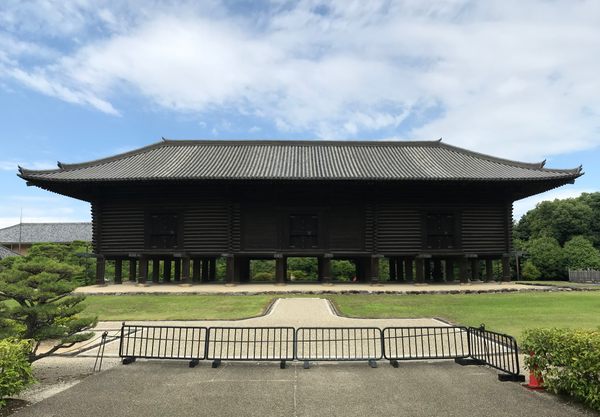Although many ancient writings and artifacts have been lost to history due to inadequate preservation, a uniquely structured raised building in Japan has protected some of society’s most important historical items for centuries. Here, preservationists mastered the art of conservation before many other societies, protecting Japan’s historical items from threats like fire and earthquakes.
The Shōsōin cypress log cabin does not necessarily invoke the image of an ancient archive, yet with regular care, it has maintained Japanese artifacts for nearly 1,200 years.
Empress Dowager Kōmyō founded the Shōsōin in 756 to house items associated with her recently deceased husband, Emperor Shōmu. Within a few years, it was completed on the grounds of the Tōdai-ji, which Shōmu created as the country’s leading Buddhist temple in the national capital, Nara.
Religious implements associated with the Tōdai-ji and other objects previously kept at the temple later joined the Shōsōin. Since its founding, the Shōsōin has been continually maintained by the Tōdai-ji and later by the Imperial Household Agency, the office of the Japanese Emperor.
Some have nicknamed this treasury the “world’s oldest museum,” arguing that no other institution has continuously preserved artifacts for such a long time.
The building is designed to naturally control its interior climate, allowing it to, at one point, preserve artifacts without modern technology. Because the Shōsōin is raised 8.8 feet (2.7 meters) above the ground, it is naturally ventilated and climate-controlled, reducing humidity during the hot summer months.
Being built in the ancient nailless azekura-zukuri style of log construction, of which the Shōsōin is the largest and oldest remaining, ensured that the cabin was flexible enough to survive earthquakes. Artifacts are also stored inside durable cedar chests for further protection.
Access to the original collection was traditionally limited, requiring permission from the imperial family. Luck and appreciation for the building’s significance also played a role in the treasury’s survival, as it was the only building spared during the Siege of Nara in 1181.
Today, the Shōsōin’s possessions are stored in nearby traditional-looking buildings made of reinforced concrete and steel and equipped with HVAC systems. Many items are kept under imperial seal except during the autumn, when staff inspect them, and some are showcased at the Nara National Museum.
The over 9,000 objects in the archives include furniture, musical instruments, clothing, religious objects, weapons, and games—all providing insight into ancient Jaoanese life. Numerous written documents, government records, and poetry are also included in the archives.
An estimated 95 percent of the collection is Japanese, with the remaining items collected from different parts of Asia, such as India and Iran. These items suggest that Japan was long connected to the Silk Road and exposed to “occidental” cultures from as far away as Egypt.
Ancient items made in China and Japan clearly show Middle Eastern influences. One of the simplest yet most extraordinary imported artifacts is a small cut glass bowl with a West Asian design, which predates the European introduction of glassmaking to Japan by over 900 years.



